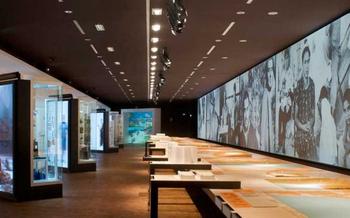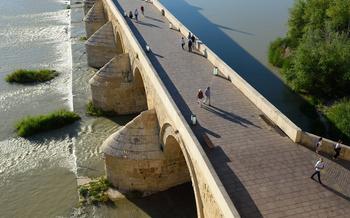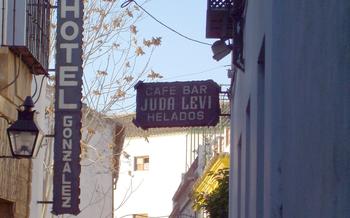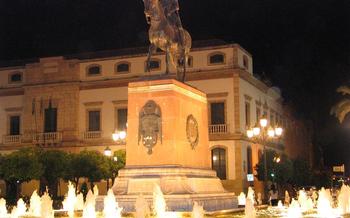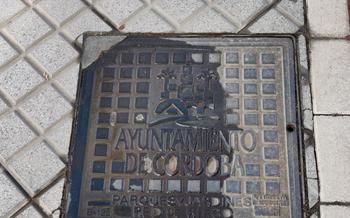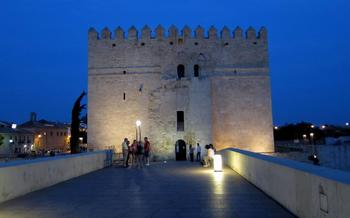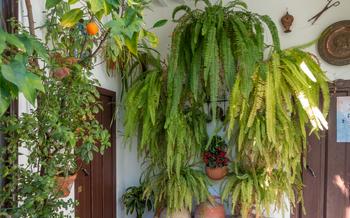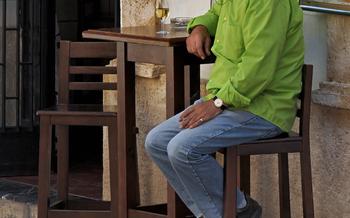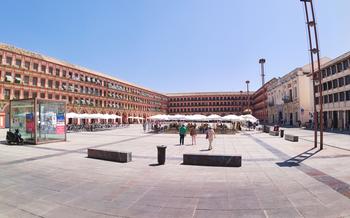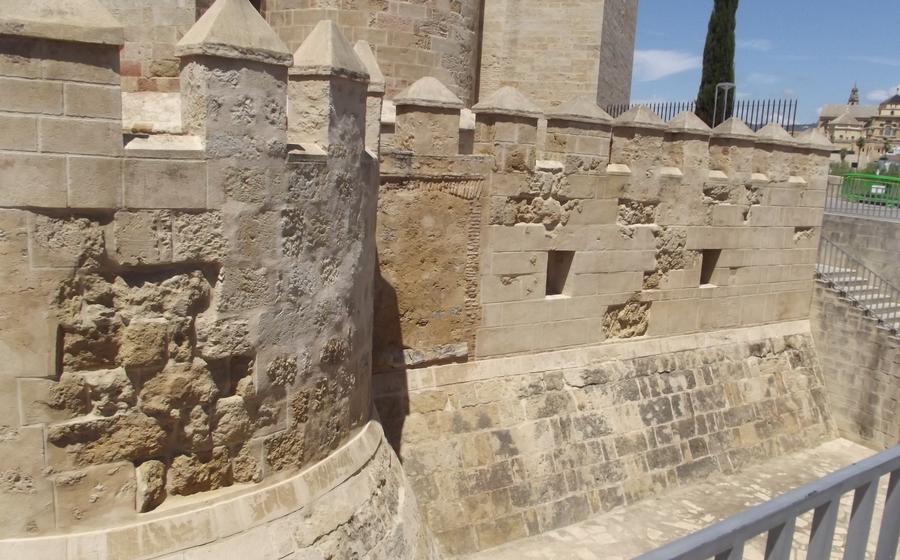
Museo Vivo de Al Andalus
- Historical Background
- Location and Accessibility
- Opening Hours and Admission Fees
- Guided Tours
- Exhibits and Displays
- Workshops and Demonstrations
- Educational Programs
- Cultural Events and Performances
- Souvenirs and Gift Shop
- Accessibility for Visitors with Disabilities
- Family-Friendly Activities
- Photography and Social Media
- Nearby Attractions
- Insider Tip
Historical Background
Córdoba, once the capital of Al Andalus, boasts a rich and storied past. During the 8th century, the Umayyad dynasty extended its empire into the Iberian Peninsula, giving rise to Al Andalus, a flourishing Islamic civilization that left an indelible mark on the region. For over five centuries, the caliphs of Córdoba ruled over a vast and prosperous realm, transforming the city into a vibrant center of culture, learning, and art. The caliphate's influence extended far beyond the borders of the Iberian Peninsula, reaching into North Africa and beyond, establishing a legacy that resonates to this day.
The Museo Vivo de Al Andalus, nestled in the heart of Córdoba's historic quarter, offers a captivating glimpse into this extraordinary period of history, inviting visitors to unravel the stories and secrets of Al Andalus and experience the vibrant tapestry of its cultural heritage.
Location and Accessibility
The Museo Vivo de Al Andalus is conveniently located in the historic Judería (Jewish Quarter) of Córdoba, a vibrant neighborhood known for its narrow, winding streets and well-preserved medieval architecture. The museum's exact address is Calle Judíos, 12, and it is situated within walking distance of many other notable landmarks in the city center.
To reach the museum using public transportation, visitors can take bus lines 3, 12, or 13 and get off at the "Ronda de Isasa" stop. From there, it is a short walk to the Judería and the museum. Alternatively, visitors can opt for a scenic stroll through the city streets, taking in the sights and sounds of Córdoba along the way.
For those arriving by car, there are several parking options available in the vicinity of the museum. The closest parking garage is located at the Plaza de la Corredera, just a few minutes' walk from the museum. Street parking is also available in the surrounding streets, subject to availability and parking regulations.
Opening Hours and Admission Fees
- The Museo Vivo de Al Andalus is open to the public from 10:00 AM to 6:00 PM, Tuesday through Sunday.
- It is closed on Mondays and national holidays.
- The admission fee for adults is 5 euros, while children under 12 years old enter free of charge.
- Discounts are available for students, seniors, and groups of 10 or more.
- Tickets can be purchased at the museum's ticket office or online through the museum's website.
Guided Tours
The Museo Vivo de Al-Andalus offers guided tours in several languages, including English, Spanish, French, and German. These tours provide an in-depth exploration of the museum's exhibits, with knowledgeable guides sharing insights into the history, culture, and significance of the artifacts on display. Guided tours usually last around 60 to 90 minutes and can be booked in advance through the museum's website or at the admission desk. The cost of a guided tour is typically included in the admission fee, but it is advisable to check the current pricing at the time of booking.
Joining a guided tour is an excellent way to enhance your understanding of the museum's collection and gain deeper insights into the vibrant history of Al-Andalus. The guides are passionate about sharing their knowledge and can provide personalized recommendations for further exploration. Whether you are a history enthusiast, a cultural explorer, or simply curious about the region's rich past, a guided tour at the Museo Vivo de Al-Andalus is highly recommended.
Exhibits and Displays
The Museo Vivo de Al Andalus boasts a wide array of exhibits and displays that immerse visitors in the vibrant history and culture of the region. Thematic sections, meticulously arranged within the museum's galleries, showcase various aspects of Al Andalus's rich heritage.
One of the highlights is the section dedicated to daily life in Al Andalus, where visitors can explore the domestic routines, customs, and traditions of the period. Through interactive displays and hands-on experiences, they can engage with replicas of traditional tools, utensils, and clothing, gaining insights into the daily rhythms of life in medieval Córdoba.
Another section focuses on the arts and crafts of Al Andalus, showcasing exquisite examples of pottery, textiles, and metalwork. Visitors can marvel at the intricate designs, vibrant colors, and skilled craftsmanship that characterized the artistic production of the era. Interactive displays allow them to learn about the techniques and materials used by artisans, fostering an appreciation for the enduring legacy of Andalusian craftsmanship.
Furthermore, the museum houses a remarkable collection of architectural elements and decorative arts, including intricate tilework, carved plaster, and wooden carvings. These artifacts provide glimpses into the architectural marvels of Al Andalus, demonstrating the fusion of Islamic and local traditions that shaped the region's unique aesthetic.
Through its engaging exhibits and hands-on experiences, the Museo Vivo de Al Andalus offers a comprehensive journey into the past, allowing visitors to explore the vibrant culture, traditions, and artistic achievements of Al Andalus.
Workshops and Demonstrations
The Museo Vivo de Al Andalus offers a variety of workshops and demonstrations that provide visitors with a unique and immersive experience. These hands-on activities allow visitors to learn about traditional crafts and skills that have been passed down through generations.
One of the most popular workshops is the leatherworking workshop, where visitors can learn the basics of leather crafting and create their own leather goods, such as wallets, bags, and belts. The museum also offers a pottery workshop, where visitors can learn how to throw and glaze their own pottery pieces.
In addition to these workshops, the museum also offers regular demonstrations of traditional crafts, such as weaving, metalworking, and woodworking. These demonstrations provide visitors with a glimpse into the skills and artistry of the artisans who created the objects on display in the museum.
The workshops and demonstrations are a great way to learn about the culture and history of Al Andalus in a fun and interactive way. They are suitable for visitors of all ages and skill levels, and they offer a unique opportunity to create your own souvenirs to take home from your visit.
Educational Programs
The Museo Vivo de Al-Andalus also offers a range of educational programs designed for schools and groups. These programs aim to bring history and culture to life for students of all ages, fostering a deeper understanding of the region's rich heritage.
School groups can book guided tours tailored to their specific curriculum, exploring themes such as the history of Al-Andalus, Islamic art and architecture, and the contributions of different cultures to the region's development. Interactive workshops and hands-on activities complement the guided tours, allowing students to engage with the museum's exhibits in a fun and educational way.
The museum also provides resources for teachers, including lesson plans, activity sheets, and multimedia presentations. These resources are designed to enhance classroom teaching and provide additional context for the museum visit.
The Museo Vivo de Al-Andalus's educational programs are an excellent way for students to learn about the history and culture of Al-Andalus in a stimulating and interactive environment. By fostering a deeper understanding of the past, the museum helps to create a more informed and engaged generation of global citizens.
Cultural Events and Performances
The Museo Vivo de Al Andalus brings the rich cultural heritage of Córdoba to life through a variety of events and performances. These events offer visitors a chance to immerse themselves in the traditions and customs of Al Andalus and gain a deeper understanding of its vibrant culture.
Regular events include traditional music concerts, dance performances, and storytelling sessions. These events showcase the talents of local artists and performers and provide a platform for cultural exchange and dialogue. Visitors can enjoy the enchanting sounds of Andalusian music, witness the grace and precision of flamenco dancers, and listen to captivating tales that transport them back in time.
The museum also hosts special festivals and celebrations throughout the year. These events often coincide with significant historical anniversaries or cultural holidays, such as the Córdoba Patios Festival or the May Crosses Festival. During these festivals, the museum comes alive with colorful decorations, lively music, and traditional food and drinks. Visitors can join in the festivities, learn about local customs, and experience the vibrant atmosphere of Córdoba's cultural heritage firsthand.
The schedule of events and performances varies throughout the year, so it is recommended to check the museum's website or social media channels for the latest information. Visitors are encouraged to plan their visit around these events to enhance their experience and gain a more comprehensive understanding of the cultural legacy of Al Andalus.
Souvenirs and Gift Shop
The Museo Vivo de Al Andalus features a delightful gift shop where visitors can purchase a variety of unique and meaningful souvenirs. These items not only serve as mementos of your visit but also support local artisans and help preserve traditional crafts.
The shop offers a carefully curated selection of handcrafted items, including pottery, jewelry, textiles, and woodwork. Each piece is meticulously crafted using traditional techniques and materials, ensuring its authenticity and quality. By purchasing these souvenirs, you are not only taking home a piece of Andalusian culture but also contributing to the sustainability of local artisans.
In addition to traditional crafts, the gift shop also offers a range of books, postcards, and other educational materials related to the history and culture of Al Andalus. These items provide visitors with an opportunity to delve deeper into the fascinating world they have just experienced. Whether you are looking for a unique gift for a loved one or a special memento for yourself, the gift shop at the Museo Vivo de Al Andalus is sure to have something to delight and inspire.
Accessibility for Visitors with Disabilities
The Museo Vivo de Al Andalus is committed to providing an inclusive and welcoming environment for visitors with disabilities. The museum has implemented several accessibility features and services to ensure that everyone can enjoy the exhibits and activities.
Wheelchair users and visitors with limited mobility can easily navigate the museum's spacious galleries and corridors. Ramps and elevators are available to access different levels of the building, making all exhibits accessible to everyone.
For visitors with visual impairments, the museum offers tactile maps and audio guides that provide detailed descriptions of the exhibits. Braille signage and labels are also available to assist visually impaired visitors in exploring the museum independently.
The museum staff is trained to assist visitors with disabilities and provide any necessary assistance or accommodations. They can help with wheelchair access, provide information in alternative formats, or arrange for sign language interpretation upon request.
By prioritizing accessibility, the Museo Vivo de Al Andalus ensures that everyone can have a fulfilling and enjoyable visit, regardless of their abilities or disabilities.
Family-Friendly Activities
The Museo Vivo de Al Andalus is a great place for families with children. There are many interactive and hands-on exhibits that will keep kids entertained and engaged. The museum also offers a variety of workshops and demonstrations that are perfect for families. Some of the most popular family-friendly activities include:
-
A replica of a traditional Arab house, where children can learn about the daily life of people in Al Andalus.
-
A traditional Arab market, where children can dress up in traditional clothing and play games from the period.
-
A pottery workshop, where children can learn how to make their own pottery.
-
A calligraphy workshop, where children can learn how to write in Arabic.
-
A cooking workshop, where children can learn how to make traditional Arabic dishes.
These activities are a great way for families to learn about the culture and history of Al Andalus in a fun and interactive way.
Photography and Social Media
The Museo Vivo de Al Andalus encourages visitors to capture and share their experiences through photography and social media. Visitors are welcome to take photos and videos throughout the museum, except in areas where photography is restricted for conservation reasons.
When sharing your photos and videos on social media, please tag the museum using the official hashtag #MuseoVivoDeAlAndalus. By sharing your experiences, you can help promote the museum and its mission to preserve and celebrate the cultural heritage of Al Andalus.
Please be respectful of other visitors and museum staff when taking photos and videos. Avoid using flash photography, as it can damage artifacts and disturb other visitors. Also, be mindful of the privacy of others and avoid taking photos or videos of people without their consent.
By following these guidelines, you can help create a positive and welcoming environment for all visitors and contribute to the preservation of the museum's unique atmosphere.
Nearby Attractions
A visit to the Museo Vivo de Al Andalus can be combined with other cultural and historical attractions in Córdoba. Just a short walk away is the Mezquita-Catedral, a stunning example of Islamic architecture that has been transformed into a Christian cathedral. The Alcázar de los Reyes Cristianos is another must-see, with its impressive fortifications and beautiful gardens.
For those interested in Jewish history, the Jewish Quarter is a fascinating place to explore. Here, you can visit the Sinagoga de Córdoba, one of the best-preserved synagogues in Spain. The Museo Sefardí provides an in-depth look at the history and culture of the Jewish community in Córdoba.
Art enthusiasts will appreciate the Museo de Bellas Artes de Córdoba, which houses a collection of paintings, sculptures, and drawings from the 14th to the 20th centuries. The Museo Arqueológico de Córdoba showcases archaeological finds from the Roman, Visigothic, and Islamic periods.
To experience the vibrant atmosphere of Córdoba, head to the Plaza de la Corredera, a lively square surrounded by bars, restaurants, and shops. The Mercado Central is a great place to sample local delicacies and buy souvenirs.
With so much to see and do, Córdoba is a city that offers something for everyone. Whether you're interested in history, art, architecture, or simply soaking up the atmosphere, you're sure to have a memorable experience.
Insider Tip
Beyond the main exhibits, the Museo Vivo de Al Andalus offers several hidden gems that are worth exploring. Ask about the museum's collection of replicas, which includes intricate reproductions of historical artifacts. These replicas provide an opportunity to handle and examine objects up close, offering a unique and interactive experience.
Another insider tip is to visit the museum's gardens. Nestled within the courtyard, the gardens are a tranquil oasis that offers a glimpse into the beauty of traditional Andalusian landscaping. Take a stroll through the fragrant walkways, admire the lush greenery, and find a peaceful spot to relax and reflect on the museum's exhibits.
